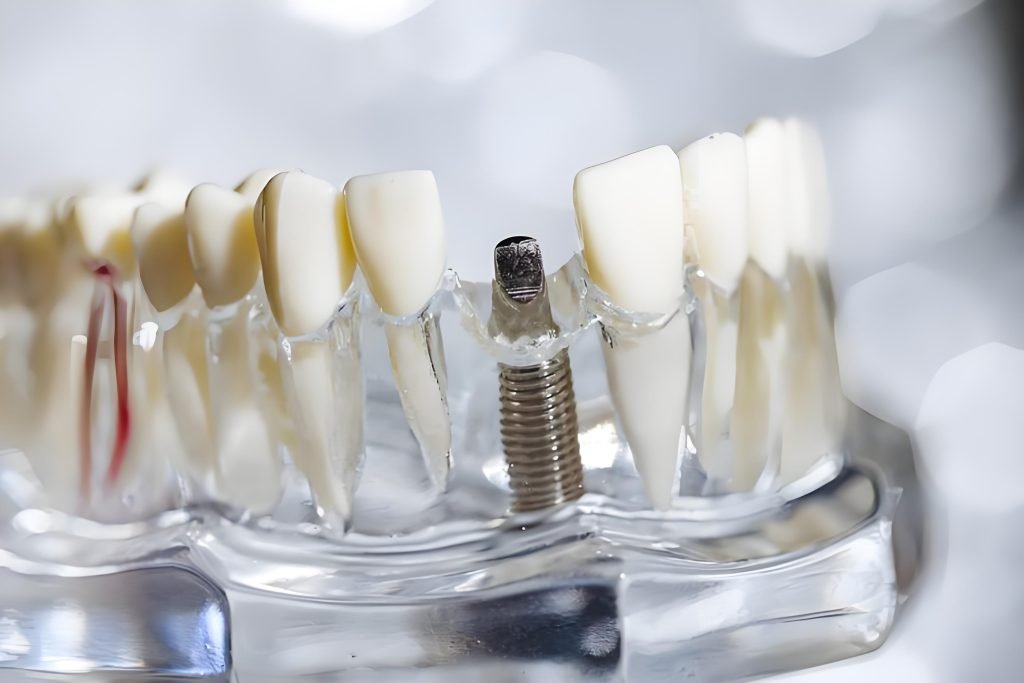You’ve likely encountered titanium in various products, from aerospace components to medical implants, and wondered about its properties. One question that often arises is whether this strong, lightweight metal is magnetic.
Titanium is known for its corrosion resistance and high strength-to-weight ratio, making it a popular choice in various industries. However, its magnetic behavior is not as well understood. The truth is that titanium is not attracted to magnets because its paired electrons cancel their orbital spin, resulting in no net magnetic moment.
As we explore the fascinating world of titanium and its magnetic properties, you’ll gain a deeper understanding of this versatile metal and its unique characteristics.

Understanding Titanium: Properties and Characteristics
Titanium is a versatile metal known for its exceptional properties. You might be wondering what makes titanium so unique. Its remarkable characteristics have made it a staple in various industries, from aerospace to medical applications.
Physical and Chemical Properties of Titanium
Titanium boasts an impressive strength-to-weight ratio, being about 45% lighter than steel but with comparable strength. This property makes it an ideal material for aircraft parts, where being lightweight is crucial for aerodynamic efficiency. Additionally, titanium has outstanding corrosion resistance due to its ability to form a stable oxide layer, protecting it from environmental degradation.
Titanium’s melting point is approximately 1,668°C, making it suitable for high-temperature applications. Its biocompatibility also makes it an excellent choice for medical implants and prosthetics.
Titanium’s Place in the Periodic Table
Titanium is positioned in the periodic table with an atomic number of 22. Its electron configuration contributes to its unique properties, such as its strength and corrosion resistance. As the tenth most abundant element, titanium’s discovery dates back to the 1790s by William Gregor, though its industrial usage significantly increased after the 1950s.
Understanding titanium’s position in the periodic table helps in appreciating its natural abundance and the reasons behind its versatile applications.
The Basics of Magnetism
Magnetism is a fundamental force of nature that affects various materials in distinct ways. It’s the property that causes certain materials to attract or repel each other, and it’s an invisible force that has real and observable effects.
You might have noticed how some metals stick to a magnet, a phenomenon due to magnetism. This force acts on specific materials, causing them to behave in different ways when exposed to magnetic fields. Understanding magnetism is key to grasping how materials like titanium interact with magnetic forces.
Types of Magnetic Behaviors in Materials
Materials exhibit different types of magnetic behaviors when exposed to magnetic fields. These behaviors are primarily categorized into three types: ferromagnetism, paramagnetism, and diamagnetism. Each type of behavior is a result of the material’s internal structure and how its electrons respond to magnetic fields.
Understanding these behaviors is crucial for determining how a material will react when exposed to a magnet. For instance, some materials are strongly attracted to magnets, while others may be weakly attracted or even repelled.
Ferromagnetic vs. Paramagnetic vs. Diamagnetic Materials
Ferromagnetic materials, such as iron, nickel, and cobalt, are strongly attracted to magnets and can retain their magnetic properties even after the external magnetic field is removed. On the other hand, paramagnetic materials like aluminum and platinum are weakly attracted to magnetic fields but lose their magnetism once the external field is removed.
Diamagnetic materials, including copper and graphite, are actually repelled by magnetic fields, although this effect is typically very weak. The difference in behavior among these materials is due to their electron configurations and how the electrons align at the atomic level, contributing to the material’s overall magnetic properties.
By understanding the basics of magnetism and the different types of magnetic behaviors, you can better appreciate how various materials, including titanium, interact with magnetic fields.
Is Titanium Magnetic? The Scientific Answer
The question of whether titanium is magnetic can be resolved by examining its electron configuration and crystalline structure. To understand this, we need to delve into the atomic level characteristics of titanium.
Titanium’s Electron Configuration and Magnetism
Titanium’s atomic structure is key to understanding its magnetic properties. Each titanium atom has electrons that are paired, resulting in opposite spins that cancel each other out. This pairing means that titanium does not have a significant magnetic moment, a crucial factor in determining a material’s magnetic behavior. The electron configuration of titanium is [Ar] 3d2 4s2, indicating that its outermost energy level has electrons in both the d and s orbitals.
Paramagnetic Properties of Pure Titanium
Pure titanium exhibits very weak paramagnetic properties at room temperature. This means it shows a minimal attraction to strong magnetic fields, but this attraction is not significant enough to be considered ferromagnetic like iron. The paramagnetic behavior is due to the alignment of electrons in the presence of a magnetic field, though this alignment is not strong and does not persist once the field is removed. As a result, for most practical purposes, titanium is considered non-magnetic.
The distinction between titanium’s paramagnetic behavior and the ferromagnetic properties of metals like iron, nickel, and cobalt is crucial. While ferromagnetic materials are strongly attracted to magnets and can be magnetized themselves, paramagnetic materials like titanium have a much weaker response to magnetic fields. This difference explains why magnets do not stick to titanium objects in the same way they do to steel or iron.
Titanium Alloys and Their Magnetic Properties
You might wonder whether titanium alloys exhibit magnetic properties, given their widespread use in various industries. Titanium alloys are created by combining titanium with other elements to enhance its properties for specific applications.

Common Titanium Alloys and Their Compositions
Titanium alloys are used in aerospace, medical, and other industries due to their strength, corrosion resistance, and biocompatibility. Common compositions include Ti-6Al-4V (Grade 5) and Ti-6Al-4V ELI (Grade 23). These alloys are widely used in aircraft components, medical implants, and other critical applications. The addition of elements like aluminum and vanadium enhances the mechanical properties of titanium, making it suitable for demanding environments.
Magnetic Behavior of Different Titanium Alloys
Most titanium alloys remain non-magnetic, similar to pure titanium. However, when alloyed with ferromagnetic elements like iron or nickel, they can exhibit very weak magnetic properties. For instance, an alloy of titanium with a high iron content may show a slight attraction to strong magnets, but this is primarily due to the iron content rather than the titanium itself. The magnetic behavior induced by these elements is typically short-lived and much weaker than that of pure ferromagnetic materials. As a result, titanium alloys are generally considered functionally non-magnetic for most practical applications.
The proportion of ferromagnetic elements in the alloy affects the overall magnetic response. While some titanium alloys may display trace magnetic responses, they are not significant enough to impact their use in most applications. Understanding the magnetic behavior of titanium alloys is essential for selecting the right materials for specific uses, especially in industries where magnetic properties are a critical consideration.
Types of Titanium and Their Magnetic Behavior
You might be surprised to learn that titanium comes in several types, each with its own set of characteristics. The different forms of titanium are used based on the specific requirements of the product being manufactured. Understanding these types and their magnetic behavior is crucial for various applications.
Pure Titanium vs. Processed Titanium
Pure titanium is known for its lightweight and non-magnetic properties, making it an ideal choice for applications where these characteristics are beneficial. In its pure form, titanium does not exhibit any significant magnetic behavior. Processed titanium, which includes alloyed titanium, may show slight variations in magnetic properties, but these are generally negligible. The processing of titanium can involve alloying it with other elements to enhance certain properties, but this does not significantly alter its non-magnetic nature.
Anodized and PVD Titanium: Effect on Magnetic Properties
Surface treatments like anodization and Physical Vapor Deposition (PVD) are commonly applied to titanium to enhance its corrosion resistance and aesthetic appeal. Anodized titanium, which has an oxide layer, retains its non-magnetic properties. Similarly, PVD-coated titanium, often used in jewelry, maintains its non-magnetic behavior despite the addition of a thin decorative layer. These surface treatments do not affect the inherent magnetic properties of titanium, ensuring that it remains non-magnetic regardless of the treatment applied.
Manufacturers choose different types of titanium based on the specific requirements of their applications. The non-magnetic property of titanium is a critical factor in many industries, including medical, aerospace, and electronics. Understanding the magnetic behavior of various titanium types helps in selecting the most appropriate form for the intended use.
Factors Influencing Titanium’s Magnetic Properties
Understanding the factors that influence titanium’s magnetic properties is crucial for its application in various industries. While titanium is generally considered non-magnetic, certain conditions can alter its magnetic behavior.
Temperature Effects on Titanium’s Magnetism
Temperature plays a significant role in determining titanium’s magnetic properties. At room temperature, titanium is non-magnetic, showing no attraction to magnets. However, at lower temperatures, the thermal energy decreases, allowing electrons to align with an external magnetic field, potentially increasing its weak paramagnetic properties. Extremely high temperatures can alter titanium’s phase structure from alpha (hexagonal close-packed) to beta (body-centered cubic), slightly changing its magnetic properties.
Pressure and Structural Changes
Pressure can disturb titanium’s crystalline structure, potentially allowing for temporary and very weak magnetic behavior as atoms become less organized. Under stress, the structure can become unorganized, enabling small magnetic moments to align. This effect is temporary and weak, and titanium returns to its non-magnetic state once the pressure is removed.
Impurities and Alloying Elements
The presence of impurities or alloying elements can significantly impact titanium’s magnetic properties. Ferromagnetic elements like iron or nickel can impart weak magnetic properties to titanium. The extent of this effect depends on the quantity and type of impurities or alloying elements. Even with these influences, titanium’s magnetic response remains extremely weak compared to truly ferromagnetic materials.
In conclusion, factors such as temperature, pressure, and impurities can influence titanium’s magnetic properties, but these changes are typically temporary and weak. Understanding these factors is essential for the effective application of titanium in various fields.
Testing Titanium’s Magnetic Response
Testing the magnetic properties of titanium involves a range of laboratory and industrial methods. To accurately determine titanium’s magnetic behavior, various techniques are employed, from simple tests with permanent magnets to sophisticated measurements using specialized equipment.
Methods to Determine Magnetic Properties
Several methods are used to test titanium’s magnetic properties. Simple tests involve using strong permanent magnets to observe if titanium is attracted or repelled. For more precise measurements, magnetometers are utilized. These devices can detect even the slightest response to magnetic fields, making them ideal for assessing titanium’s weak paramagnetic nature.
More advanced techniques include using Superconducting Quantum Interference Devices (SQUIDs) and Vibrating Sample Magnetometers (VSMs). These instruments can measure the extremely weak magnetic response of titanium under controlled conditions, such as very low temperatures or strong magnetic fields.
Measuring Magnetic Susceptibility in Titanium
Magnetic susceptibility is a measure of how much a material becomes magnetized in an external magnetic field. For paramagnetic materials like titanium, this value is positive but small, indicating a weak attraction to magnetic fields. By using magnetometers and other sensitive instruments, researchers can measure titanium’s magnetic susceptibility with high precision.
These measurements are crucial for applications where titanium’s non-magnetic properties are critical, such as in medical implants, aerospace components, and electronic devices. Understanding and verifying titanium’s magnetic behavior under various conditions ensures its suitability for these sensitive applications.
Titanium in CNC Machining: Impact of Non-Magnetic Properties
Understanding the impact of titanium’s non-magnetic properties is crucial for effective CNC machining. When machining titanium, its non-magnetic nature presents unique challenges that require specialized approaches.
Challenges in Machining Non-Magnetic Titanium
Machining titanium using CNC techniques can be complicated due to its non-magnetic properties. For instance, magnetic workholding systems, commonly used for ferromagnetic materials, are ineffective for titanium parts. This necessitates alternative clamping methods, which can add complexity to the machining process. Moreover, the non-magnetic nature of titanium affects chip management, as titanium chips cannot be collected using magnetic chip collectors, potentially leading to heat management issues if not properly addressed.
Solutions and Best Practices
To overcome the challenges associated with machining non-magnetic titanium, Fecision’s CNC service providers adapt their processes by using specialized clamping fixtures and chip evacuation systems. It’s also crucial to implement appropriate cutting speeds, tool selection, and cooling strategies that account for titanium’s non-magnetic nature and its low thermal conductivity. By adopting these best practices, we can efficiently machine titanium despite its non-magnetic properties, ensuring high-quality outcomes for their CNC machining projects.
Practical Applications of Titanium’s Non-Magnetic Nature
Titanium’s non-magnetic nature opens up a wide range of practical applications across various industries. You can find titanium being used in critical components where magnetic interference is a significant concern. This property, combined with its strength, corrosion resistance, and lightweight nature, makes titanium an ideal material for numerous applications.
Medical Applications
In the medical field, titanium’s non-magnetic properties are particularly valuable for implants such as joint replacements or dental implants. Since MRI machines use strong magnetic fields, having non-magnetic materials like titanium ensures that implants won’t be affected by these fields, reducing the risk of complications or disruptions during scans or treatments. This makes titanium a preferred choice for medical implants that need to be MRI-compatible.

Aerospace and Marine Industries
The aerospace industry utilizes titanium’s non-magnetic properties in aircraft components that must not interfere with sensitive navigation equipment or electronic systems. Similarly, in marine environments, titanium’s non-magnetic nature combined with its corrosion resistance makes it ideal for components that must not disrupt compass readings or other navigation instruments. This unique combination of properties makes titanium a valuable material in these industries.
Electronics and Sensitive Equipment
In the electronics industry, where precision is key, titanium’s non-magnetic properties allow it to be used in sensitive equipment such as sensors and instruments. Since titanium does not interfere with magnetic fields, it can be used in enclosures, housings, or casings without the concern of distorting magnetic readings or affecting the performance of the equipment. This makes titanium a valuable material for applications where maintaining precise magnetic measurements is crucial.
Conclusion
This comprehensive guide has provided a detailed look at titanium’s magnetic properties, shedding light on its paramagnetic nature. You’ve gained a comprehensive understanding of titanium’s magnetic properties, confirming that titanium is paramagnetic rather than ferromagnetic like iron or nickel. The scientific reasons behind titanium’s non-magnetic behavior, including its electron configuration and crystalline structure, have been explored. Factors such as temperature, pressure, and impurities slightly influence titanium’s magnetic properties, though these effects are minimal in practical applications.
Titanium’s unique combination of properties, including its non-magnetic nature, lightweight strength, and corrosion resistance, makes it invaluable across multiple industries. From medical implants to aerospace components and sensitive electronic equipment, titanium’s applications are diverse and significant. We hope this guide has answered your questions about titanium’s magnetic properties and provided valuable insights for your specific applications or interests in this remarkable metal.
Titanium’s high strength-to-weight ratio, corrosion resistance, and non-magnetic properties make it an ideal material for applications in these industries.




